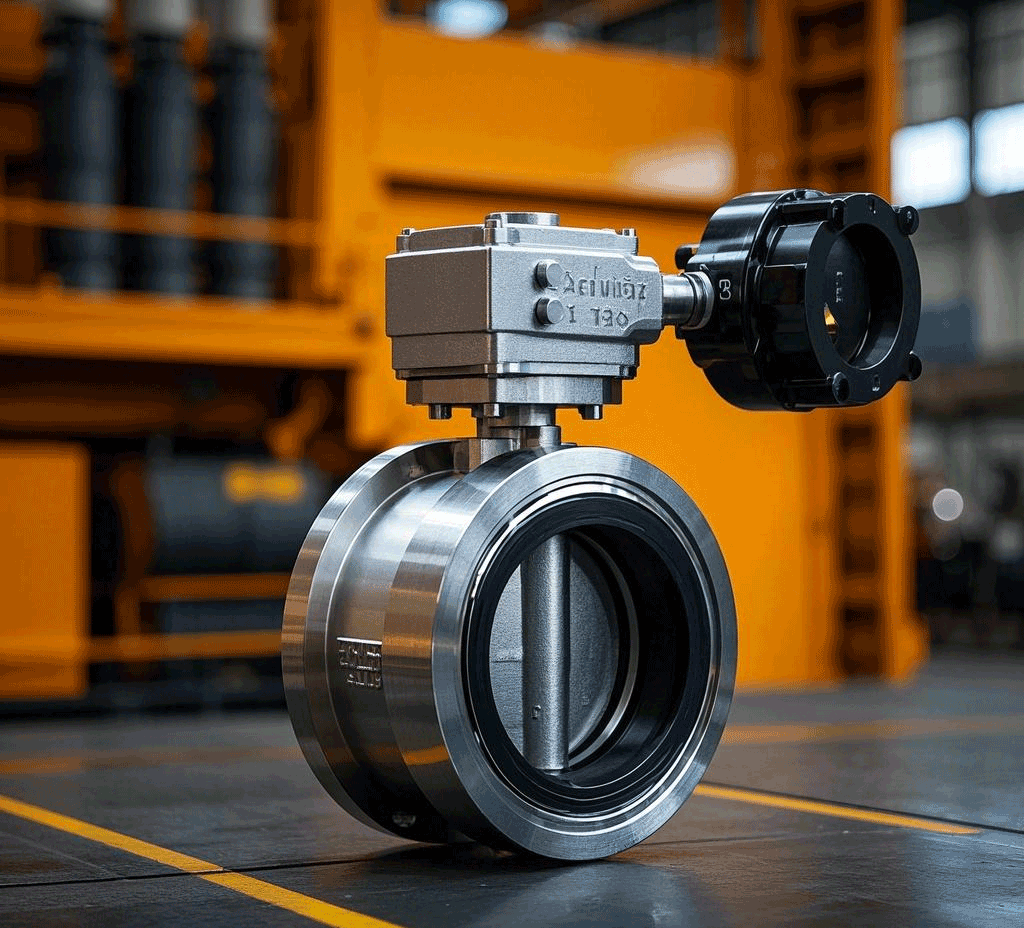Butterfly valve, a kind of valve to control the fluid passage through the round butterfly plate rotating with the valve stem, its installation and maintenance need to pay attention to the following points:
Installation position: When installing, please make sure the valve flap is in the closed state.
Opening angle: The opening position of the butterfly valve should be accurately determined according to the rotation angle of the butterfly plate.
Use of bypass valve: If the butterfly valve is equipped with a bypass valve, please open the bypass valve before opening the main valve.
Follow instructions: Please follow the manufacturer’s installation instructions strictly, and for butterfly valves with large weight, make sure that they are installed on a stable foundation.
Next, let’s learn about several main types of butterfly valves:
I. Concentric butterfly valve
The structure of concentric butterfly valve is characterized by the stem axis, butterfly plate center and valve body center is located in the same position. This design makes the structure relatively simple and easy to manufacture. The common rubber lined butterfly valve belongs to this category. However, because the butterfly plate and the valve seat are always in the state of extrusion and scraping, which may lead to greater resistance and faster wear.
Second, single eccentric butterfly valve
In order to solve the extrusion problem of concentric butterfly valve, single eccentric butterfly valve comes into being. Its structure is characterized by the stem axis off the center of the butterfly plate, which makes the upper and lower ends of the butterfly plate no longer as the axis of rotation, thus dispersing and reducing the excessive extrusion of the butterfly plate and valve seat.
Double Eccentric Butterfly Valve
Further improved on the basis of single eccentric butterfly valve, we get the most widely used double eccentric butterfly valve. Its structure is characterized by the axis of the valve stem is not only away from the center of the butterfly plate, but also away from the center of the valve body. This double eccentric design makes the valve open, the butterfly plate can quickly detach from the valve seat, thus greatly eliminating the butterfly plate and the seat between the unnecessary extrusion and scraping, reducing the opening resistance, reducing wear and tear, and improving the life of the valve seat.
Four, three eccentric butterfly valves
Three eccentric butterfly valve is designed to solve the contradiction of double eccentric butterfly valve under some specific conditions. It combines the advantages of hard seal and soft seal, both high temperature resistance and zero leakage.
Butterfly valve is not only characterized by simple structure, small volume, light weight, material saving and small installation size, but also has small driving torque and easy and rapid operation. At the same time, it also has good flow regulation and closing sealing characteristics. Butterfly valve is the dominant form of valve in the field of large and medium caliber, medium and low pressure use.
With the application of anti-corrosion synthetic rubber and PTFE and other advanced materials, the performance of butterfly valves has been significantly improved to meet a variety of working conditions. In recent years, metal-sealed butterfly valves have developed rapidly, especially in high temperature, low temperature, strong corrosion and erosion and other extreme working conditions, metal-sealed butterfly valves have been widely used, and gradually replaced some of the globe valves, gate valves and ball valves.
The structural characteristics of butterfly valve make it an ideal choice for cutting off, connecting and regulating the medium in the pipeline, and its good fluid control characteristics and shut-off sealing performance make it widely used in the industrial field.
